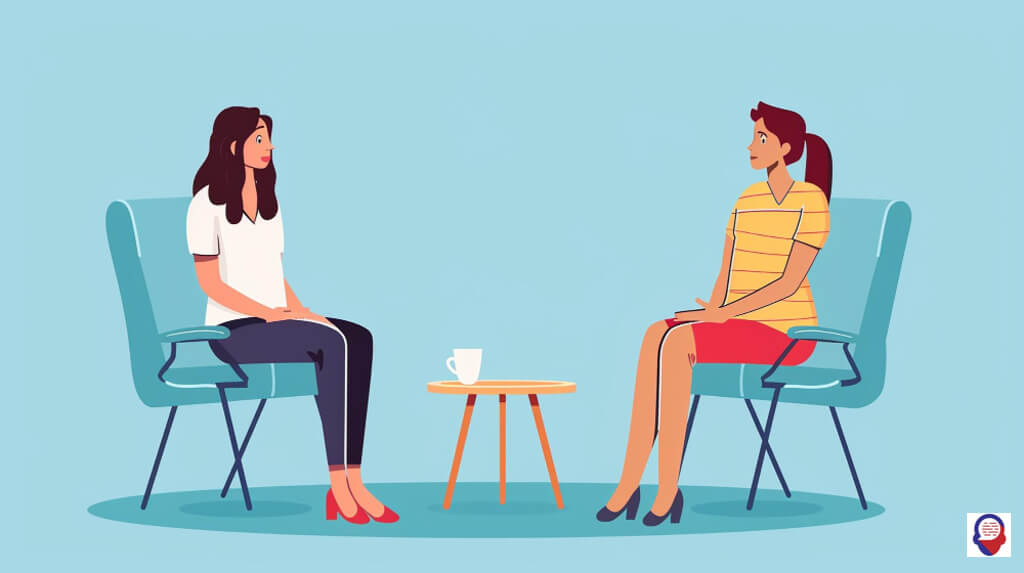Healing Together: A Guide to DBT for Families
When a family is in pain, it feels like the very foundation of your world is shaking. The arguments might be constant, a relentless cycle of misunderstanding and hurt feelings. Or perhaps it’s a suffocating silence, where emotions are buried so deep that connection feels impossible. You see a loved one struggling, maybe a teenager with overwhelming emotions or a partner lost in distress, and you feel helpless, unsure how to build a bridge across the chasm that has formed. This is a journey no family asks for, yet many find themselves on. In these moments of profound difficulty, there is a powerful, evidence-based path forward, a therapy designed not just for the individual, but for the entire family system. It’s called Dialectical Behavior Therapy, or DBT, for families.
DBT family therapy isn’t about pointing fingers or assigning blame. It’s about equipping every single member of the family with a new set of tools. It’s a practical, compassionate approach that teaches you how to navigate intense emotions, communicate effectively, and survive crises together. This is a therapy built on the dual pillars of acceptance and change, a recognition that you can love and accept each other exactly as you are, while simultaneously working together to build a healthier, more joyful life. It offers a structured way to transform a home filled with tension into a sanctuary of validation and support.
This guide will walk you through the core principles of DBT family therapy. We will explore what it is, how it works, and who can benefit from its transformative power. It’s a journey toward understanding, not just of your loved one, but of yourself and the intricate dance of family dynamics. It’s about learning a new language, one of validation, mindfulness, and skillfulness, so you can finally stop surviving the storms and start building a stronger, more resilient family, together.

What Exactly Is Dialectical Behavior Therapy?
Dialectical Behavior Therapy, or DBT, is a type of cognitive-behavioral therapy originally developed to treat individuals with borderline personality disorder, who experience extreme emotional instability. Its success, however, has led to its adaptation for a wide range of challenges involving emotional dysregulation. The core of DBT lies in its name, "dialectical," which refers to the integration of opposites.
The central dialectic in DBT is acceptance and change. This means the therapy simultaneously pushes for two seemingly contradictory goals. It teaches radical acceptance, the idea of accepting reality and oneself without judgment, while also providing concrete skills to promote positive changes in behavior and emotional responses. This balance is the magic of DBT, preventing the shame that can come from focusing only on change, and avoiding the stagnation that can result from focusing only on acceptance.
Developed by Dr. Marsha Linehan, DBT is built on the idea that some individuals are born with a higher emotional sensitivity. When this biological predisposition meets an environment that doesn’t know how to validate or manage these intense feelings, it can lead to significant emotional dysregulation. DBT works by teaching specific skills to manage these intense emotions, navigate difficult relationships, and tolerate distress without making a situation worse.

How Does DBT Work in a Family Setting?
DBT in a family setting adapts the principles of individual DBT to the entire family system, treating the family itself as the client. The therapy operates on the understanding that an individual’s emotional struggles do not happen in a vacuum, they are influenced by and, in turn, influence the family environment. The primary goal is to shift the family from what DBT terms an "invalidating environment" to a "validating" one.
An invalidating environment is one where a person’s emotional experiences are often dismissed, punished, or ignored. This is rarely intentional or malicious. It can be as simple as a parent saying, "You’re overreacting," or, "Just calm down," to a highly distressed child. While well-intentioned, these responses can make the individual feel wrong, misunderstood, and alone in their pain, often escalating their emotional response.
DBT family therapy works by teaching all family members how to recognize and change these patterns. It provides a shared language and a common set of skills to manage conflict and emotional crises. The therapist acts as a coach, helping the family practice these new skills in real-time, transforming the home into a place where every member feels seen, heard, and understood, which is the foundation for lasting change.

What Are the Core Skills Taught in DBT Family Therapy?
The therapy is highly structured and skill-based, focusing on four key modules that provide a comprehensive toolkit for emotional and interpersonal health. These skills are taught to all participating family members, creating a shared framework for navigating challenges. This ensures everyone is working from the same playbook, fostering mutual understanding and support.
The four modules are Mindfulness, Distress Tolerance, Emotion Regulation, and Interpersonal Effectiveness. Each module addresses a critical component of psychological well-being. By learning and practicing these skills together, families can fundamentally change how they interact, solve problems, and support one another through life’s inevitable difficulties.

What is the Mindfulness Module?
Mindfulness is the foundational skill of DBT, teaching you how to be fully present and aware in the current moment without judgment. For families caught in cycles of conflict, mindfulness provides a crucial "pause" button. It helps members stop reacting impulsively based on past hurts or future fears and instead observe what is happening right now, both internally and externally.
This module includes "What" skills, which are observing, describing, and participating. Family members learn to simply notice a thought or feeling without getting swept away by it, to put words to their experience without adding interpretation, and to throw themselves completely into the present activity. It also includes "How" skills, which are non-judgmentally, one-mindfully, and effectively. This means letting go of self-criticism, focusing on one thing at a time, and doing what works to achieve a valued goal.
In a family context, mindfulness can be revolutionary. A parent might mindfully notice their own anger rising during a disagreement and choose to take a breath instead of yelling. A teenager might observe their feelings of sadness without concluding they are a "depressed person," allowing the emotion to pass more freely. It is the practice of seeing reality clearly, which is the first step toward responding to it wisely.

What is the Distress Tolerance Module?
Distress Tolerance skills are for surviving crises without making things worse. Life is full of painful situations, and these skills are designed to help you get through them when you cannot immediately change them. This is particularly vital for families dealing with high-stakes issues like self-harm, suicidal ideation, or explosive anger.
These skills are divided into two sets, crisis survival and reality acceptance. Crisis survival techniques are short-term strategies to bring down intense emotional arousal. This includes skills like TIPP, which stands for Temperature (splashing cold water on your face), Intense exercise, Paced breathing, and Paired muscle relaxation. Families learn to use these techniques to de-escalate a heated argument or manage overwhelming urges.
Reality acceptance skills, on the other hand, are about learning to accept life on life’s terms. The most important of these is "radical acceptance," which is the deep, non-judgmental acceptance of the facts of reality. For a family, this could mean radically accepting a child’s diagnosis or the fact that past mistakes cannot be undone. This acceptance is not approval, it is simply acknowledging what is, which reduces suffering and frees up energy to focus on problem-solving.

What is the Emotion Regulation Module?
While Distress Tolerance is about surviving overwhelming emotions, Emotion Regulation is about learning to manage and change them in the long term. This module helps family members understand the function of their emotions, reduce their vulnerability to negative emotions, and change unwanted emotions once they arise.
First, individuals learn to identify and label their emotions, understanding that emotions themselves are not bad, they are natural responses that provide us with important information. Next, the module focuses on reducing emotional vulnerability by building a life worth living. This involves practical steps like balancing sleep, nutrition, and exercise, treating physical illness, and building positive daily experiences. A family might work together to ensure everyone is getting enough rest or plan enjoyable activities to build a reservoir of positive feelings.
Finally, families learn skills for changing unwanted emotions. This includes "checking the facts" to see if an emotion fits the reality of a situation, and "opposite action," which involves acting opposite to the emotion’s urge when the emotion is not justified or helpful. For example, if a family member feels the urge to withdraw due to fear of rejection, opposite action would be to lean in and connect.

What is the Interpersonal Effectiveness Module?
The Interpersonal Effectiveness module is essentially a masterclass in relationships. It teaches clear, respectful communication skills to help family members get their needs met, maintain their self-respect, and strengthen their relationships. For families struggling with communication breakdowns, these skills are often the key to unlocking connection.
This module teaches three primary skill sets. The first is DEAR MAN, a script for effectively asking for something or saying no. It stands for Describe, Express, Assert, Reinforce, stay Mindful, Appear confident, and Negotiate. A teenager might use this skill to negotiate a later curfew, or a parent might use it to set a clear boundary around screen time.
The second skill set is GIVE, which is for maintaining relationships. It stands for be Gentle, act Interested, Validate, and use an Easy manner. This teaches family members how to listen and respond in a way that makes the other person feel heard and cared for, even during a disagreement. The third is FAST, which focuses on maintaining self-respect. It stands for be Fair, no Apologies (for having an opinion or saying no), Stick to your values, and be Truthful. This empowers individuals to hold their ground respectfully, preventing resentment from building.

Who Can Benefit from DBT Family Therapy?
DBT family therapy is most widely known for helping families with an adolescent or young adult who is struggling with severe emotional dysregulation, self-harm, or suicidal behaviors. In these high-stakes situations, DBT provides a structured, life-saving intervention that supports both the individual and the family system that is trying to cope with the crisis.
However, the benefits of DBT family therapy extend far beyond these specific crises. Any family experiencing high levels of conflict, constant arguments, and emotional blow-ups can find relief through this approach. It provides a roadmap for de-escalating fights and replacing yelling and blaming with skillful communication and mutual problem-solving. It is a powerful tool for families where communication has completely broken down.
Furthermore, families where one or more members struggle with conditions like anxiety, depression, eating disorders, or substance use can also benefit immensely. The therapy helps the family understand how the home environment may be unintentionally exacerbating these issues and provides tools to create a more supportive, validating atmosphere that promotes recovery for everyone involved. It’s for any family that wants to move from a place of conflict and disconnection to one of understanding and resilience.

What Does a Typical DBT Family Therapy Session Look Like?
A typical DBT family therapy session is structured, active, and focused on skill-building. It is not an unstructured conversation where family members are left to simply air their grievances. Instead, the therapist acts as a skilled and compassionate coach, guiding the family through a predictable and productive process.
Sessions often begin with a brief mindfulness exercise to help everyone become present and centered. This sets a calm and focused tone for the work ahead. Following this, the therapist will typically review the family’s "diary cards," which are worksheets used to track emotions, urges, and skill use between sessions. This review helps identify patterns and celebrate successes in applying the skills in daily life.
The bulk of the session is usually dedicated to targeting a specific problem that occurred during the week. The family, with the therapist’s guidance, might conduct a "chain analysis" to break down the sequence of events, thoughts, and feelings that led to a conflict. The goal is not to blame, but to identify points in the chain where a different, more skillful behavior could have been used. The session often concludes with the teaching of a new skill and a plan for how the family will practice it before their next meeting.

How Is This Different from Traditional Family Therapy?
While DBT family therapy shares the goal of improving family functioning with more traditional approaches, its methodology is distinctly different. Traditional family therapies might focus more on exploring family history, roles, and unconscious dynamics, often through less structured, insight-oriented conversations. DBT, in contrast, is fundamentally a behavioral therapy.
The most significant difference is the explicit focus on teaching concrete skills. While other therapies discuss the importance of communication, DBT provides specific acronyms and step-by-step instructions, like DEAR MAN or GIVE, and has families actively rehearse them. It is highly practical and solution-focused, aiming to give family members tangible tools they can use immediately to manage distress and improve interactions.
Another key differentiator is the dialectical framework of acceptance and change. DBT places a strong, upfront emphasis on validation and radical acceptance as prerequisites for change. This structured approach to balancing validation with problem-solving is unique. The therapy is also more directive, with the therapist taking on the role of a teacher and coach, rather than a passive observer or interpreter of the family’s dynamics.

What Are the Long-Term Goals of This Therapy?
The immediate goal of DBT family therapy is often to stop life-threatening behaviors and reduce severe family conflict. However, the long-term vision is far more ambitious and transformative. The ultimate aim is to create a "wise mind" family, one that can skillfully balance emotion and reason to navigate life’s challenges effectively.
One major long-term goal is to build a fundamentally validating and nurturing home environment. This is a family culture where members feel safe to express their true feelings without fear of judgment or dismissal. Such an environment fosters emotional security and provides a solid foundation for each individual’s personal growth and mental health long after therapy has ended.
Another crucial goal is empowerment. DBT aims to make the therapist obsolete by equipping every family member with a comprehensive set of life skills. These skills in mindfulness, distress tolerance, emotion regulation, and interpersonal effectiveness are not just for solving family problems, they are tools for building a successful and fulfilling life in all domains. The therapy seeks to create a family of skilled, resilient individuals who can support themselves and each other for years to come.
Frequently Asked Questions

How long does DBT family therapy usually take?
The duration of DBT family therapy can vary depending on the family’s specific needs and the severity of the issues being addressed. However, it is not typically a short-term fix. Families should generally expect to commit to the process for at least six months to a year to allow enough time to learn, practice, and integrate the four core skill modules into their daily lives.

Does the whole family have to participate?
Ideally, all family members living in the home or who are central to the family’s dynamics should participate. The more members who learn the shared language and skills of DBT, the more effective the therapy will be in changing the overall family environment. That said, the therapy can be flexible and adapted if some members are unwilling or unable to attend.

Is it just for families with teenagers?
While DBT family therapy is very commonly used with families of adolescents, its principles and skills are applicable across the lifespan. The approach can be successfully adapted for families with adult children, for couples seeking to improve their relationship, or for any family unit that is struggling with emotional dysregulation and conflict. The core skills are universal human skills.

Will we be blamed for our child’s problems?
Absolutely not. A core principle of DBT is its non-judgmental and compassionate stance. The therapy operates from a "no-blame" perspective, assuming that everyone is doing the best they can with the tools they currently have. The focus is never on faulting parents or family members, but on understanding unintentional patterns and working together as a team to learn new, more effective ways of relating and coping.

At Counselling-uk, we understand that when your family is struggling, you need more than just advice, you need a safe harbour. You need a space where you can speak your truth without judgment, a place held by professionals who are committed to guiding you through life’s most difficult challenges. The journey to a more peaceful and connected family life is possible, and it begins with the courageous first step of asking for help.
If you recognize your family in the struggles described here, we are here to support you. We provide a confidential, professional, and deeply compassionate environment where you and your loved ones can learn the skills to heal and grow together. You don’t have to navigate this storm alone. Reach out to us today to discover how we can help you build a stronger, more resilient family, one skillful moment at a time.




Overall, DBT Family Therapy is an effective way for families to work together more effectively and build healthier relationships. By providing families with the tools they need to better communicate, manage stress, and handle emotions in a healthy way, this form of therapy has helped many improve their relationships and increase their overall wellbeing.
What is DBT Family Therapy?
Therefore, DBT family therapy works to build emotional regulation skills which are essential for creating healthier relationships within the home environment. Emotional regulation involves learning how to recognize one’s own feelings as well as the feelings of others in order to better manage emotions during times of stress or tension. Emotional regulation techniques include identifying triggers that cause distress, creating an action plan for dealing with challenging emotions, practicing cognitive restructuring techniques such as reframing negative thoughts into positive ones, and learning how to self-soothe when feeling overwhelmed or anxious.
Dialectical Behavior Therapy (DBT) is an evidence-based treatment that focuses on improving emotion regulation and interpersonal relationships. DBT family therapy is an important component of DBT treatment and is designed to help families develop skills to deal with the challenges of living with a loved one who has difficulty managing emotions. The goal of DBT family therapy is to create a supportive environment where family members can learn new skills to manage difficult situations, improve communication, and build strong relationships.